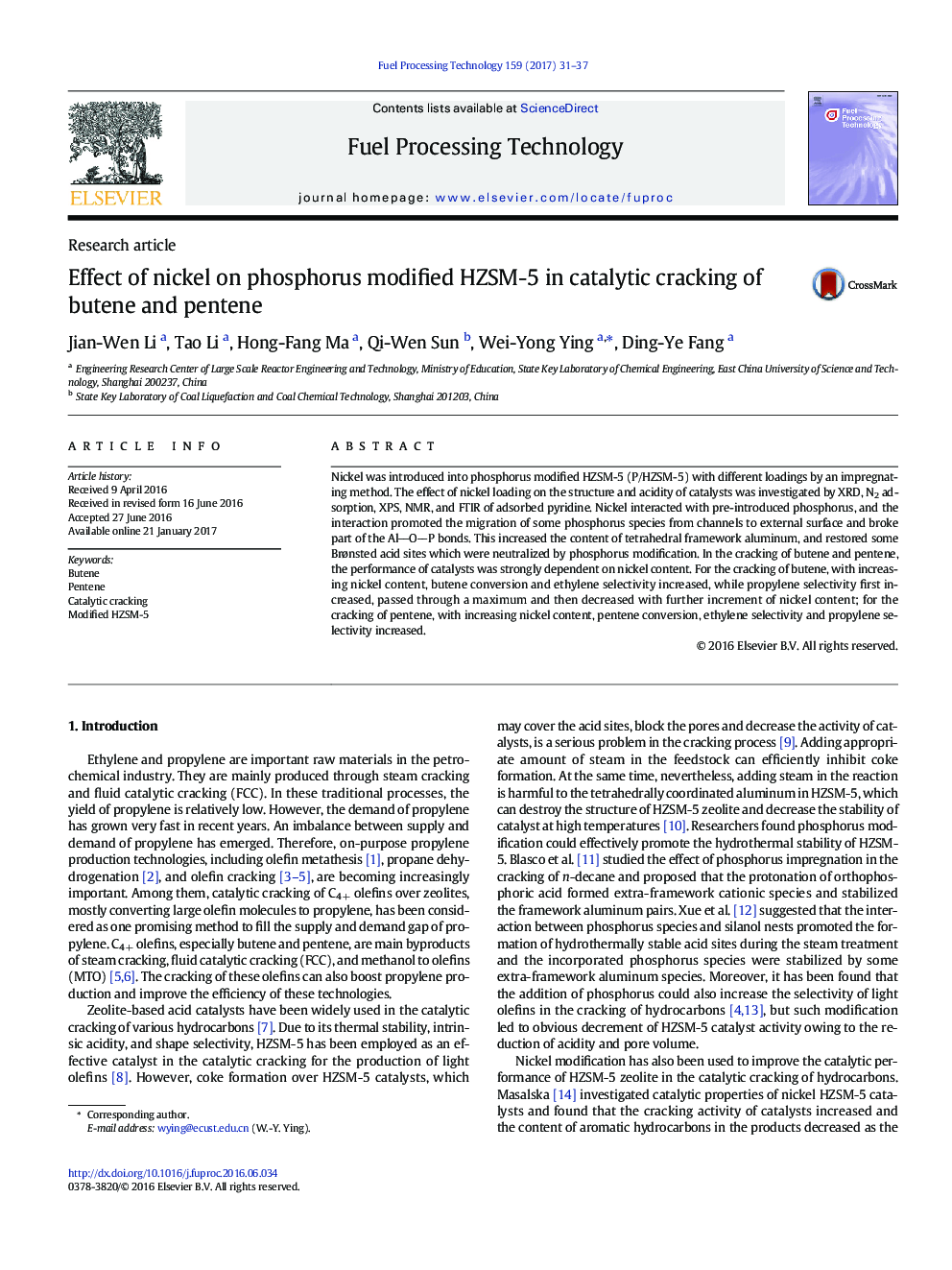| Article ID | Journal | Published Year | Pages | File Type |
|---|---|---|---|---|
| 4914341 | Fuel Processing Technology | 2017 | 7 Pages |
â¢Nickel was employed to modify P/HZSM-5 in the cracking of butene and pentene.â¢Nickel interacted with phosphorus and increased tetrahedral framework aluminum.â¢The interaction between nickel and phosphorus restored some Brønsted acid sites.â¢The enhancement of catalyst acidity changed cracking route of butene and pentene.
Nickel was introduced into phosphorus modified HZSM-5 (P/HZSM-5) with different loadings by an impregnating method. The effect of nickel loading on the structure and acidity of catalysts was investigated by XRD, N2 adsorption, XPS, NMR, and FTIR of adsorbed pyridine. Nickel interacted with pre-introduced phosphorus, and the interaction promoted the migration of some phosphorus species from channels to external surface and broke part of the AlOP bonds. This increased the content of tetrahedral framework aluminum, and restored some Brønsted acid sites which were neutralized by phosphorus modification. In the cracking of butene and pentene, the performance of catalysts was strongly dependent on nickel content. For the cracking of butene, with increasing nickel content, butene conversion and ethylene selectivity increased, while propylene selectivity first increased, passed through a maximum and then decreased with further increment of nickel content; for the cracking of pentene, with increasing nickel content, pentene conversion, ethylene selectivity and propylene selectivity increased.
